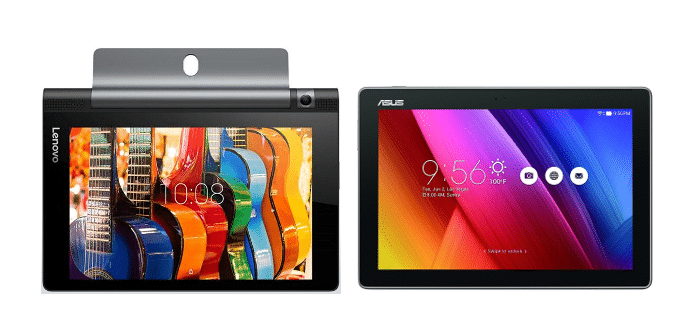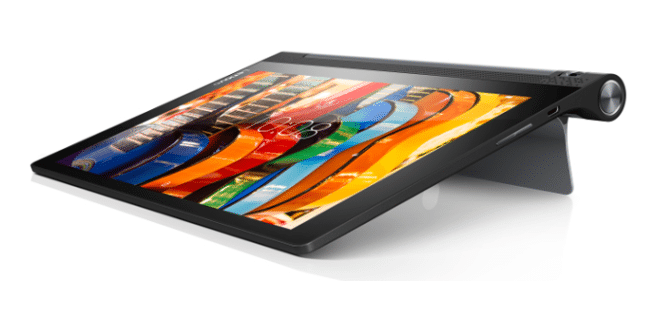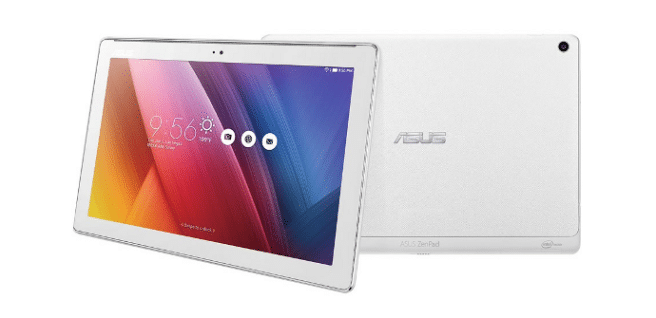
We continue to review how the field of mid-range tablets is with the arrival of the new Yoga tab 3, pitting her against another of the most recent additions, the ZenPad 10. Both are good options with the guarantee of having two large companies behind, but their characteristics are in some points quite different, so, depending on what we are looking for, we may be more interested in one or the other. We review the Technical specifications of both in this comparative to help you decide which one is the most appropriate in your case.
Integrated
The design section is a good example of a point in which we find very different virtues in each case and in which our preferences are going to play a very important role: if we give more importance to aesthetics, it is likely that we the more attractive ZenPad, which is quite stylish and elegant for this price range; If we value more practical issues, it must be taken into account that the unusual cylindrical support of the Yoga tab 3 It is very useful to hold it in our hands and it also has a support to rest it on the table.
Dimensions
We find much less difference, however, if we compare their dimensions, at least with regard to size (25,3x16,5 inch against 25,16x17,2 inch) and thickness (7,8 mm against 7,9 mm), always leaving aside the support of the Yoga tab 3, of course. It is true that there is an important advantage in weight, however, for the ZenPad 10 (665 grams against 510 grams).

Screen
Equality is much greater, if not absolute, in the screen section: in both cases it is 10.1 inches, with aspect ratio 16:10 (optimized for video playback), HD resolution (1280 x 800) and a pixel density of PPI 149. Either of these two tablets, therefore, should bring us similar satisfaction.
Performance
There is a little more difference in the performance section, since their respective processors have similar characteristics (four cores and frequency of 1,3 GHz versus quad core and frequency 1,2 GHz), but the ZenPad has an advantage in RAM memory (1 GB against 2 GB). They arrive, yes, with Android Lollipop (Normally, Android Marshmallow still takes some time to reach the mid-range).
Storage capacity
Nor will the storage capacity section help us too much to choose between them, since the basic model of both arrives with 16 GB of internal memory, which is usual in mid-range tablets, and both have a slot micro-SD to expand it externally.

Cameras
In the cameras section, there are notable differences, which may be worth taking into account in case it is an important point when choosing a tablet (although we always insist that it is convenient to be realistic with respect to the use that we are going to give it) : on the one hand, the Yoga tab 3 It has a single camera, but it is 8 MP; on the other, with the ZenPad we have a camera on the back and another on the front, but both are much lower, with 2 and 0,3 MP, respectively (there is a slightly more expensive model with 5 and 2 MP cameras, but the one we will find most frequently is this other one).
Autonomy
Here, unfortunately, we cannot draw conclusions, but not because there is too much equality, but because we do not yet have data from autonomy tests and Asus You have not disclosed the battery capacity of your tablet. The only thing we can say is that the tablet Lenovo is one of the highest in this range, with 8400 mAh, and the truth is that the range has always been characterized by a good autonomy, although we will have to wait for the tests to confirm if the trend is maintained or not.
Price
As we have pointed out, there are two variants of the ZenPad, but the one that we normally find in Spain, is sold for prices that, although they vary depending on the distributor, are around $200 (Its starting price was 220 euros, but it has already dropped a bit in some stores). The Yoga tab 3, for its part, costs $250 And since its release is still fairly recent, there's no reason to expect it to be down very soon.